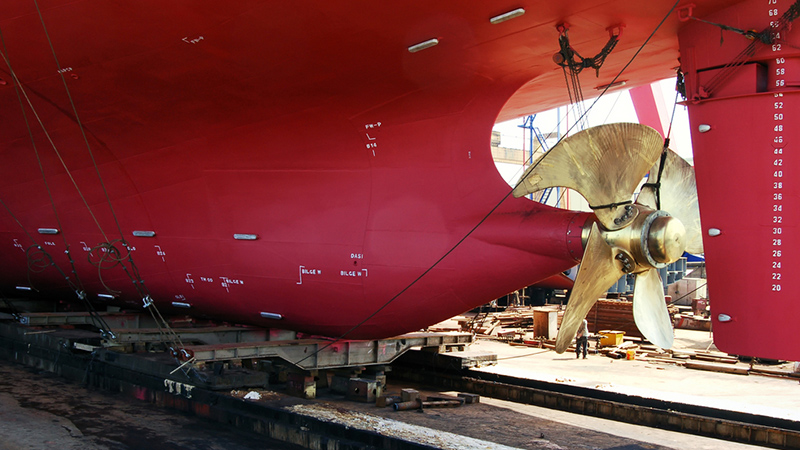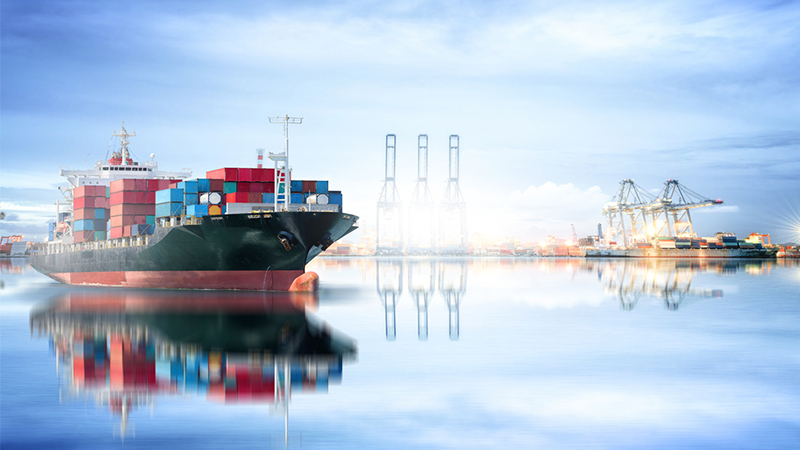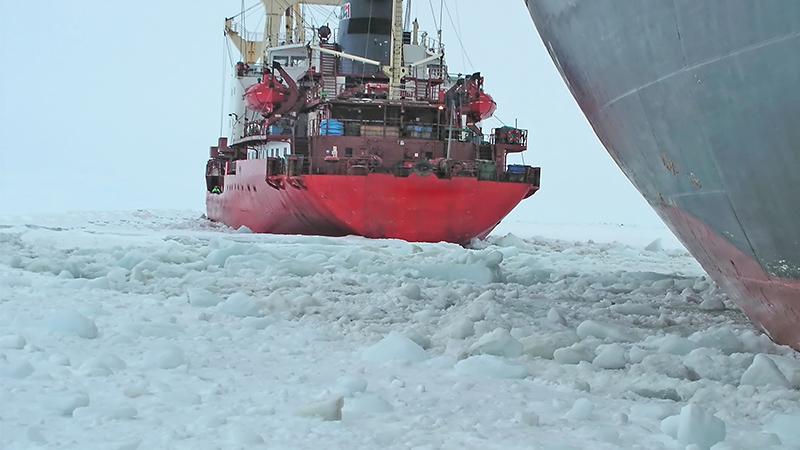On-line measurement of oil gives up-to-date information for operators
The Propulsion Unit of ABB Marine and Turbocharging relies on Vaisala to measure the moisture in lubrication oil on-line. The Vaisala HMP228 Moisture and Temperature Transmitter for Oil is a standard feature in the ABB Azipod® propulsion system. The HMP228 provides fast, reliable and accurate measurements of moisture in oil in the circulation lubrication system of under-water propulsion motors.
ABB Marine is a leading global electrotechnical partner with the marine industry. ABB supplies power plants and electric propulsion systems - including azimuthing electric propulsion, total automation systems and a wide range of other electrotechnical products and drive systems. ABB Marine has provided the world’s shipbuilders with state-of-the art electric propulsion drives for luxury cruise vessels, ro-ro vessels, tankers and offshore and special purpose vessels for more than half a century.
Azipod® Propulsion System – the world’s leading propulsion system
ABB introduced Azipod, the first azimuthing podded propulsion system on the market, at the beginning of the 1990s. The Azipod propulsion system combines the advantages of various conventional propulsion systems available today. The propulsion system provides the major benefits of excellent dynamic performance and maneuvering characteristics, hydrodynamic efficiency resulting in shorter harbor times, reduced fuel consumption and safer operation even in harsh weather, restricted passages and offshore environments.
The Azipod system is an azimuthing electric propulsion drive with a propulsion motor installed inside a submerged azimuthing (unlimited 360 degrees) pod, coupled directly to an extremely short propeller shaft. The variable speed electric (AC/AC) drive produces smooth torque over the entire speed range, including zero speed. ABB designs and manufactures Azipod propulsion units for all marine propulsion applications, with units available with powers of up to 25 MW.

Over 10 years marine experience
Azipod was first conceived in 1987. After several years of research and development, the world’s first Azipod® propulsion system (1 x 1500 kW) was delivered in 1990 to the service vessel “Seili”. This was followed by the first tanker application “Uikku” (1 x 11 400 kW) in 1993, the first icebreaker application “Röthelstein” (2 x 560kW) in 1994, and the first cruise vessel application “Elation” (2 x 14 000 kW) in 1998. By 2002, 76 Azipod units had been delivered to a total of 36 ships, with 11 delivered to ice breaker applications. Azipod units now have more than 472,000 cumulative operating hours in the world’s seas.
Vaisala HMP228 Moisture and Temperature Transmitters for Oil are being installed in Azipod propulsion systems to measure on-line the moisture in the oil in circulation lubrication. Each ship has from one to three propulsion units and each propulsion unit has its own HMP228 to control oil.
HMP228 units have already been installed in over twenty Azipod systems. It is a standard feature in new propulsion units and retrofittings are also being done on old units. “The on-line detection of moisture in oil with HMP228 has raised a lot of interest and customers are really willing to have the HMP228 units in their ships, even as retrofittings,” says Mrs Lundell, Production Engineer of ABB Marine and Turbocharging, Propulsion Units.
On-line measurement helps operators monitor oil quality
Water contamination reduces the performance of oil, increasing the risk of corrosion, overheating, machine malfunction and other problems. Measuring and controlling the moisture in lubrication systems is essential to avoid costly failures. Careful monitoring of the moisture in oil within lubrication systems helps to plan servicing and prevent unscheduled downtime, thus potentially cutting maintenance costs substantially. Online detection is especially important in applications with a risk of water contamination, for example marine applications.
In the Azipod propulsion system the electric propulsion motors are located under water. Each motor has two bearings, a propeller bearing and a thrust bearing. The lubrication system circulates oil from bearings in the propulsion unit to inside the ship’s machine room, where the HMP228 unit is located. The purpose of on-line detection of moisture in oil is to monitor oil quality and to secure the proper lubrication quality. “The amount of oil in the Azipod propulsion system is rather small - only around 200 liters - compared to traditional propulsion systems that have up to 4000 liters of lubrication oil,” explains Mrs Lundell. “With such a small amount of oil even a small amount of water will reduce lubrication quality, therefore, the moisture in the oil in the lubrication system must not exceed certain limits. The HMP228 issues a warning immediately something has happened so that the oil can be changed or purified.”
HMP228 provides flexible and easy measurement
The first system ABB used to detect moisture in oil was an optical measurement system. “Optical measurement was expensive and difficult to assemble,” remarks Mrs Lundell. “After testing the HMP228 and finding it fast, reliable and accurate we decided to change to it for on-line moisture detection. Above all, the HMP228 is easy to assemble and use: just fix the ball valve and connect the cables and the HMP228 is ready to go!”
Oil type, age and temperature irrelevant
Measurement with the HMP228 is independent of oil type, age and temperature. The HMP228 Transmitter measures water in oil in terms of water activity (a w ). The water activity measurement indicates directly whether there is a risk of free water formation. With a relative scale from 0 (no water present) to 1 (oil is saturated with water) it gives a reliable indication of how close the saturation point is. Water in its free form has a water activity of 1. As the solubility of water in oil increases with rising temperature, the saturation point of oil pulls further away.
Thus water activity decreases with rising temperature. According to Mrs Lundell, using water activity as a unit is new in the marine industry: “We have become accustomed in this field to seeing water saturation expressed as ppm. ABB has therefore had a conversion diagram from aw to ppm made by the VTT Technical Research Centre of Finland. Water activity has certain advantages in its independency of oil type, age and temperature, but as long as our customers in the marine industry are more familiar with ppm than aw values we will use them too.”

MMP8 + Indigo500 have replaced MMT330 which has earlier replaced HMP228.
The article was first published in Vaisala News 160/2002/Päivi T. Laitinen/ Vaisala.
